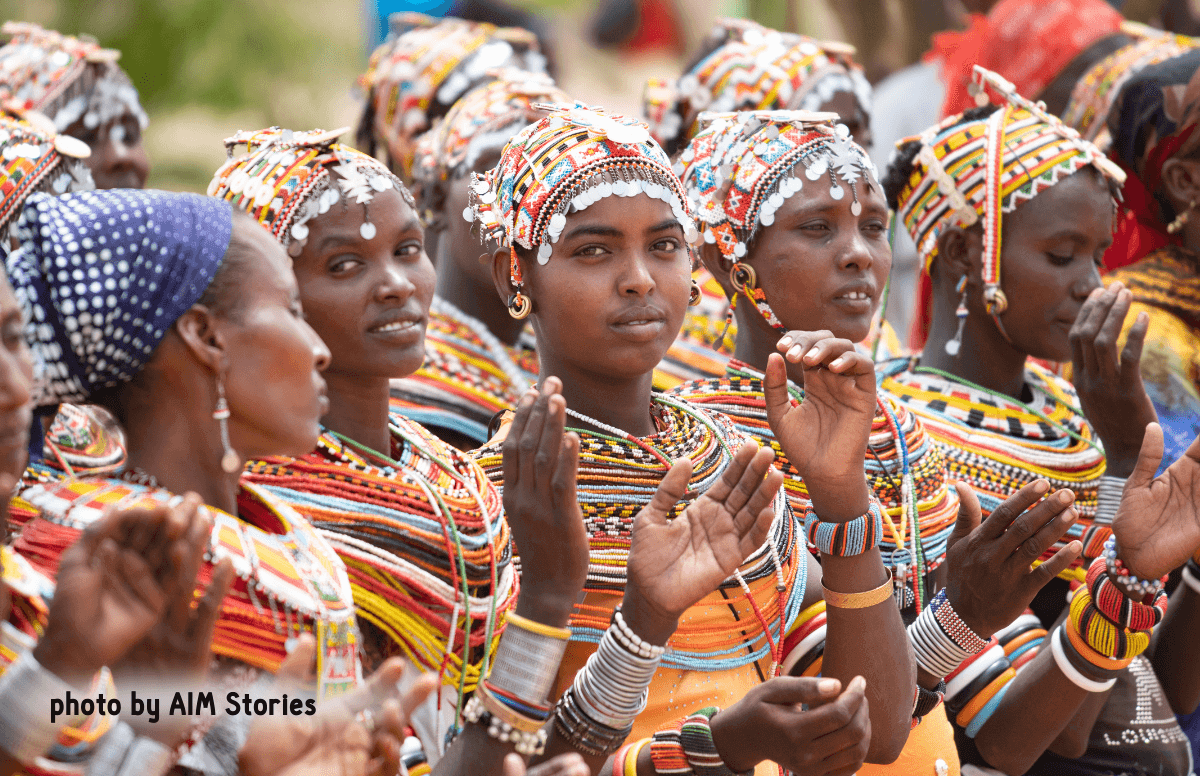Ethnodoxology: every people’s praise
AfriGO Team

Ethnodoxology—what is that? It is a word that was created in 2019 to describe a new global movement which encourages all cultures to use their art forms to worship God. From the Greek words ethnos, which means nation, tribe, or race, and doxology, which means praise, comes a combined word which describes a whole new approach to church planting and local church practice.
Often in the past, Western missionaries brought with them not only the Gospel of Jesus, but the hymnbooks and song styles of their home churches. Postures of sitting in church, prohibitions on dance, attitudes of prayer, and even styles of clothing were modelled after the West. You still see it in most of our churches today, and for many it has become the “right” way to worship.
Now, established churches across the globe, as well as new believers and converts from other faiths are finding that their traditions in music, dance, art, and other cultural practices can make worship and teaching about Jesus more meaningful. In acknowledgement of the power of local arts in the local church, “ethnodoxology” was born.
How does it work?
You can see one example in our article on the opposite page, “Local Music, Local Language, Local Impact.” Another example might be visual artists in a community expressing praise to God in their paintings, clothing patterns, or house decorations. What is important is that people who participate in the process turn it toward God, and the people outside the process see God. Of course, believers will have to wrestle with the possibility of syncretism, which is when something that conflicts with Scripture is brought into Christianity. Local believers must carefully consider this. See Oluwaeyi David Ige’s article called “Arts and spiritual attachment” for a deeper dive into this subject.
Arts – not just music and painting
In our article called “Jenga Films impacts lives”, John Karanja relays how he is creating videos to share about missions. Is this art? Certainly. The images, music, and spoken word all come together to create an emotion and ignite a response in the viewer towards something that glorifies God.
How about pottery, dance, weaving? All of these can be used to praise God, and they are especially valuable when they spring forth from the heritage of the people making them. When God redeems something so recognizable and deeply connected within an individual, a family, or a community, the familiarity brings a knowledge of Him closer.
The Church does not have to use something foreign to be legitimate. In a culture where people sit on the ground, the congregation can sit on the ground. In a culture where teaching is done orally through stories around the fire, biblical truths can be imparted to all ages. In a culture where dance communicates, those dances can tell about God. Ethnodoxology describes all of these.
People who can think about the use of local arts to enrich the Church are vitally needed, and you can learn more about courses, resource materials, and journals listed below.
RESOURCES ON ETHNODOXOLOGY
Global Ethnodoxology Network: Offers networking, training, and resources for the flourishing of biblical and culturally appropriate arts. https://www.worldofworship.org/
- Ethnodoxology: A Global Forum on Arts and Christian Faith: A journal to report, inspire, and train. https:// artsandchristianfaith.org/index. php/journal
- Global Consultation for Arts and Music in Missions: A tri-annual conference to celebrate and instruct on using the arts in missions. https://gcommhome.org/
- Inspiro Arts Alliance, a ministry of OM: sends artists around the world. https://inspiroartsalliance.org/
- Dallas International University’s Center for Excellence in World Arts. justin_randolph@sil.org
- Payap University in Chiang Mai, Thailand: https://ia.payap.ac.th/linguistics/ (As of 27 May 2025, this link no longer works)
- All Nations Christian College in the UK: offers degrees in Arts and Intercultural Worship. https://www. allnations.ac.uk/
- For information about SIL’s arts programme, contact arts@sil.org
 Called by God, Questioned by Family
Called by God, Questioned by Family Read More
Read More